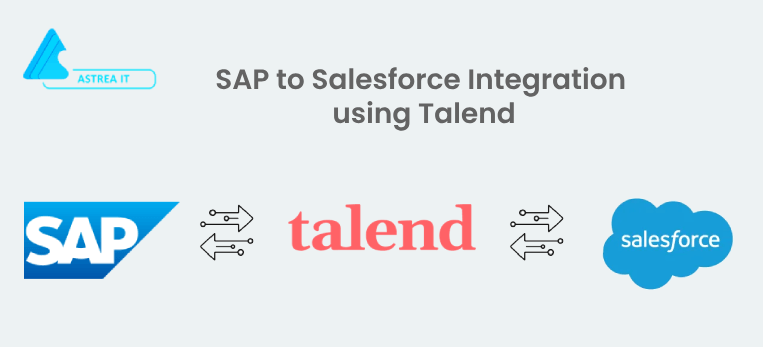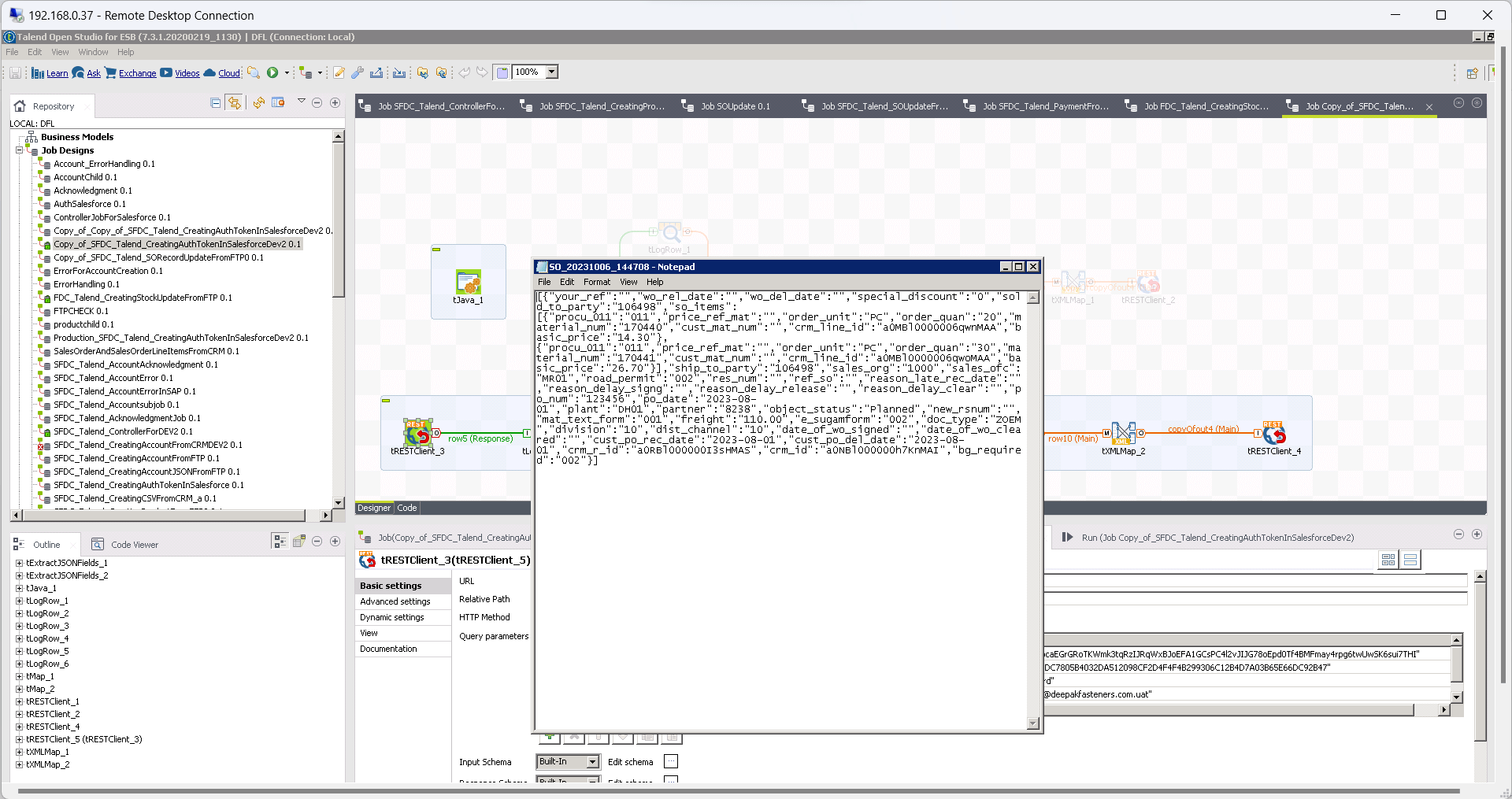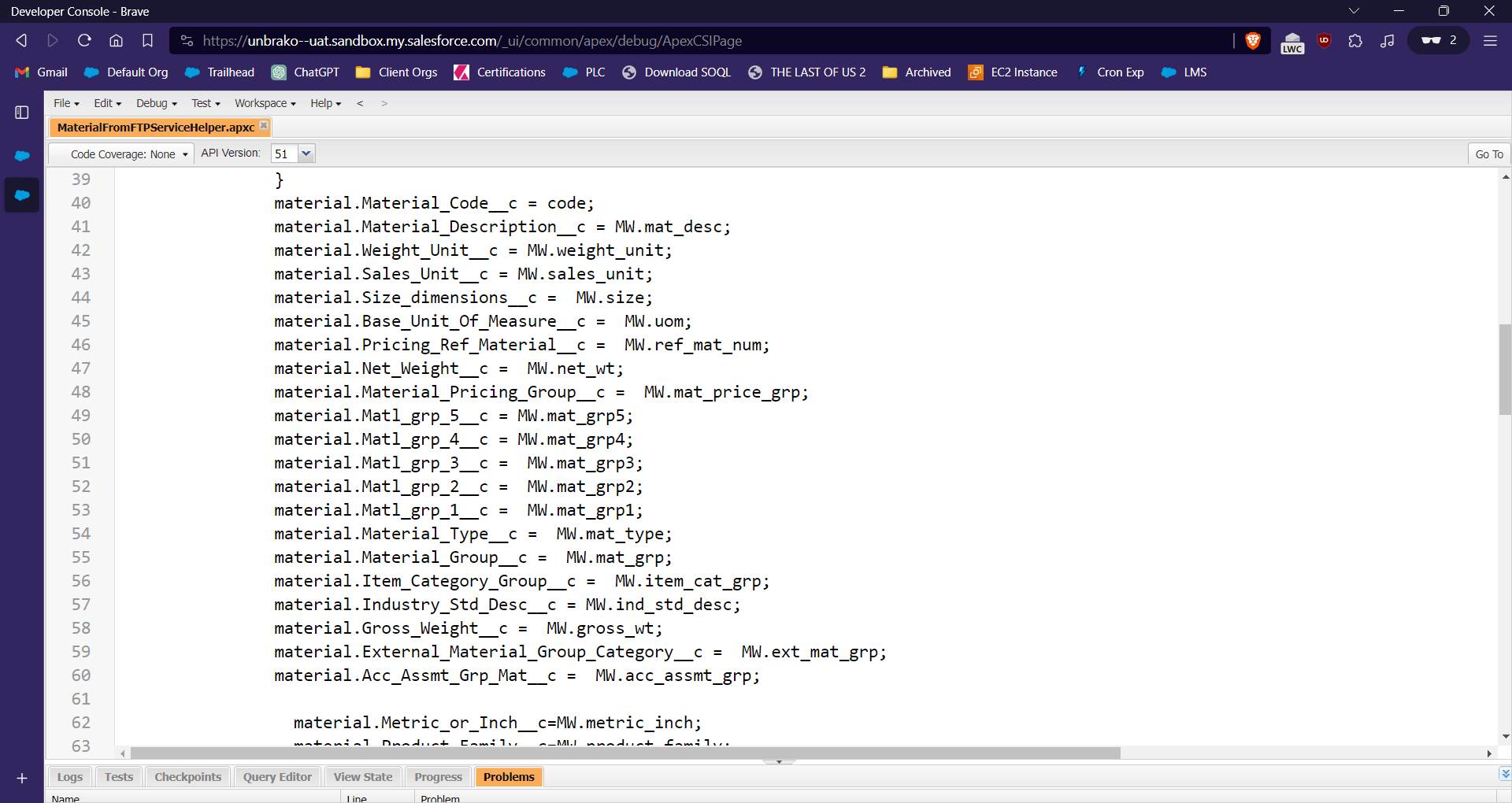Introduction:
In today's fast-paced business landscape, efficient data management and communication with customers are paramount. The integration of various systems and platforms has become a crucial aspect of success for companies of all sizes. One such powerful integration solution is the combination of SAP and Salesforce. In this blog, we'll explore the benefits and use cases of integrating SAP with Salesforce using Talend, and how it can help your business reach new heights.

SAP is the market leader in ERP. Salesforce is the market leader in CRM. Thousands of large businesses use both Salesforce and SAP. It is business critical to move custom and order related information from Salesforce to SAP. Similarly order processing status and payment status needs to be moved from SAP to Salesforce.
What is Talend?
Before diving into the intricacies of SAP to Salesforce integration using SAP, let's start with the basics. Talend is a renowned data integration and transformation tool that simplifies the process of moving data between different systems, automating data workflows, and making data accessible and meaningful. It provides a user-friendly, visual interface that enables organizations to connect to various data sources, transform data, and load it into different destinations seamlessly.
The Need and Use-Cases of Talend:
Data is the lifeblood of any modern business, and it needs to flow smoothly between systems to fuel decision-making and customer engagement. Here's why you need Talend:
Data Consolidation: Talend allows you to consolidate data from multiple sources, providing a unified view of your information. This is especially valuable for businesses dealing with disparate data across departments.
Data Quality and Transformation: Ensure the quality and accuracy of your data by implementing transformations, cleansing, and validation processes within Talend. This is crucial for reliable analytics and reporting.
Automation: Automate data processes, reducing manual errors and saving time. Whether it's daily data updates, batch processing, or real-time data streams, Talend can handle it all. Scalability: As your business grows, Talend scales with you. It can handle both small-scale and enterprise-level data integration needs.
Use cases of Talend include ETL (Extract, Transform, Load) processes, data warehousing, data migration, and more. In essence, Talend empowers you to harness the full potential of your data.
The Benefits of Integrating with Salesforce:
Salesforce, the world's leading customer relationship management (CRM) platform, plays a central role in managing customer relationships, sales, and marketing. Integrating Talend with Salesforce can be exceptionally beneficial for your business: Seamless Data Synchronization: Talend ensures that your Salesforce data is always up-to-date by synchronizing it with other systems, such as your ERP or marketing automation software. Improved Customer Insights: Combining Salesforce data with data from other sources, like your website or product usage, can provide a 360-degree view of your customers. This leads to more personalized marketing and sales strategies.
Efficient Lead Management: With Talend, you can automate the process of capturing and routing leads from various sources directly into Salesforce. This results in faster response times and increased sales conversions.
Enhanced Reporting and Analytics: Talend can extract data from Salesforce and transform it into formats that are more suitable for analytics, making it easier to derive actionable insights from your CRM data.
Cost Savings: By automating repetitive data-related tasks, you reduce the risk of errors and free up your team to focus on strategic activities. This, in turn, can lead to cost savings and improved operational efficiency.
Our Business scenario:
There are several ways for a customer to contact the business for their requirements, which makes it difficult for the client to manage a central database of all the client information coming from different channels. Thus, a two-way integration for different business processes is necessary to ensure data integrity. Based on our client's requirement, there are six different business processes that we need to automate using this integration:
Account: Customer accounts can be created through various channels, including web channels, direct sales representative contact, or through SAP. Therefore, it is crucial to ensure that customer account information is consistently updated in the Salesforce organization (Salesforce org) from all these channels.
Sales Order: Efficient management of sales orders is vital for our business. Automation of the sales order process will help in streamlining order creation, tracking, and fulfillment. This integration should ensure seamless communication between various systems involved in the sales order process.
Account: Automation of the invoicing process is essential for accuracy and efficiency. Invoices should be generated and managed consistently across all channels, making it easier to track transactions and payments.
Payment: Automating the payment process is critical for a smooth and error-free financial transaction. Ensuring that payment information is updated accurately in Salesforce from all channels will aid in financial transparency and accountability.
Stock Detail: Managing stock details is a key aspect of many businesses. This integration should enable real-time updates of stock levels, making it easier to monitor inventory and make informed decisions regarding restocking or order fulfillment.
Material: The handling of materials, whether for manufacturing or other purposes, requires effective tracking and management. Integrating material-related data from various channels ensures that you have up-to-date information on your materials, aiding in production and supply chain efficiency.
By automating these six business processes and establishing a seamless two-way integration, we aim to enhance data accuracy, reduce manual errors, and provide a consistent and efficient experience for both our clients and our team. This integrated approach will ultimately lead to improved customer satisfaction and better operational efficiency for our business.
How it works:
These are the steps of how a Talend - Salesforce Integration works:
1. Setting up Talend Endpoint:
The integration process begins with Talend, a powerful data integration tool. Talend exposes a POST API endpoint that serves as the gateway for data transfer. To make this endpoint accessible over the internet, we utilize a tool like Ngrok. Ngrok creates a secure tunnel that allows external systems, including Salesforce, to connect to Talend's API.

2. Initiating Communication:
Once the Talend endpoint is up and running, Salesforce comes into play. Salesforce, as a robust customer relationship management (CRM) platform, has the capability to interact with external APIs. It hits the exposed Talend endpoint with various parameters in the form of an HTTP request.
3. Parameters for Data Transfer:
These parameters in the HTTP request serve as instructions for Talend, indicating what needs to be done. The key components of these parameters typically include:
JSON Data: Salesforce receives data in JSON format, which contains the information to be processed. This data may represent various aspects of the business, such as customer records, sales leads, or any other relevant data.
Object Type: The parameters specify the Salesforce object type to be updated. This is a critical piece of information that directs Talend on where to place the incoming data.

4. Data Transfer:
Upon receiving the request, Talend parses the JSON data and proceeds to transfer the required json files to the appropriate endpoint in your Salesforce organization. This is where the magic of integration happens.
5. Exposing Salesforce Endpoints:
Salesforce is not just a sender but also a receiver in this integration. In Salesforce, you can configure various endpoints to receive inbound data for different objects or processes. These endpoints are designed to accept data from external sources, including Talend, and process it within Salesforce.

6. Access Token for Security:
To ensure the security of data exchange between Talend and Salesforce, access tokens come into play. Access tokens are a form of authentication that verifies the legitimacy of the request coming from Talend. Talend utilizes Salesforce's Access Token API to acquire these tokens, ensuring that the communication is secure and authorized.

7. Data Mapping and Transformation:
Once the data reaches Salesforce, it undergoes a process of mapping and transformation. Salesforce parses the incoming JSON data and maps it into the corresponding fields within the Salesforce object. This mapping is customized based on the specific business requirements and data structure.

8. Automation and Real-time Processing:
One of the key advantages of this integration is the automation it brings to the data flow process. Talend and Salesforce work together to ensure data transfer happens seamlessly, and they can be set up for real-time data processing or batch processing as required.
9. Reporting and Analysis:
As data is successfully transferred and integrated, it becomes a valuable resource for generating reports and conducting analysis. This data can be used for generating insights, making informed decisions, and improving various business processes.
Conclusion:
In conclusion, the integration of Talend with Salesforce offers a compelling solution for businesses looking to streamline their data management processes, enhance customer relationships, and drive growth. By leveraging the power of Talend to Salesforce integration, you're not just integrating systems; you're integrating success into your business operations. This powerful mechanism not only streamlines data communication between the two systems but also involves exposing endpoints, exchanging data in JSON format, and ensuring secure and authenticated communication through access tokens. With data mapping and automation, this integration enhances data accuracy, streamlines processes, and empowers businesses to make more informed decisions, ultimately leading to better customer relationships and improved operational efficiency. As we delve deeper into the technical aspects of this integration in future posts, you'll discover how to make this dynamic duo work for you. Stay tuned for more insights on optimizing your data integration strategy.
For any queries please reach out to support@astreait.com